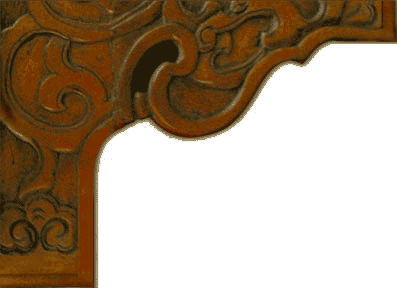PROGRAM NOTE
The composer's intention in this work is to present a composition of genuine musical seriousness that is accessible to very young bands. The theme of THEME AND VARIATIONS has a somber character resembling some of the the ethnic melodies collected in eastern Europe during the early years of the twentieth century. The theme is eight measures long and is divided into two symmetrical halves, which are in turn divided into two-measure units that form a call-and-response pattern. Melodically, the theme takes all its pitches from the diatonic minor scale (the white notes of the piano keyboard starting on the note, D).
In the first eight measures the theme is presented in low instruments with an answer in high instruments. In the next eight measures, there is a canonic treatment of the theme, followed by a two-measure transition. The next eight measures (meas. 19-26) contain a diminution of the theme (with the theme played in 8th notes), presented against staccato quarter note accompaniment. Beginning at measure 27 the theme is heard in the relative major key (E-flat major). Measures 37-45 return to the original tonality of C minor with the theme played against a rhythmic ostinato first introduced by the snare drum in bars 35-36, utilizing call-and-response pattern as in the beginning of the work.
THEME AND VARIATIONS was composed during November and December of 1993 especially for the North Courtland School Band of East Stroudsburg, Pennsylvania, Melodie A. Shamp, director. The first performance was played by the North Courtland School Band on March 8, 1994, conducted by the composer.
TIMOTHY BROEGE
--------------------------------------------------------------------------------
PERFORMANCE NOTES & TEACHING SUGGESTIONS
1. The prevailing style of articulation should be legato, with staccato employed only in Variation 2 (measures 19-26).
2. Tempo should be slow and somber, but always flowing. Slight alterations in tempo may be employed to help characterize each variation, but no large variations in tempo should occur until the concluding rallentando.
3. Some broadening of tempo may be employed at phrase endings to help clarify the musical structure. In addition, the metrical space between the fourth beat of a just-concluded phrase and the first beat of the subsequent phrase may be expanded in order to characterize each variation effectively.
4. Dynamic contrast is an important component of the composition. Players should be encouraged to differentiate between thematic material and accompaniment material, and should always be listening for the theme.
5. Players should be encouraged to identify and listen for the various structural procedures used in the piece, including:
- call and response
- canonic imitation
- diminution of rhythmic values
- modal transposition; and
- recapitulation.
It may be rewarding for players to experiment with composing their own variations of the theme.
6. Although few technical demands are made in this work, the challenge to young players is to play with sensitivity and accuracy, for only then will a musically satisfying performance be achieved.
TIMOTHY BROEGE
--------------------------------------------------------------------------------
Instrumentation
1 Full Score
12 Flute
2 Oboe
6 Bb Clarinet 1
6 Bb Clarinet 2
8 Eb Alto Saxophone
8 Bb Tenor Saxophone/Bb Bass Clarinet/Euphonium T.C.
2 Eb Baritone Saxophone
6 Bb Trumpet 1
6 Bb Trumpet 2
4 F Horn
12 Trombone/Euphonium
8 Tuba/Bassoon
2 Timpani
5 Percussion
Copyright © 1999 Manhattan Beach Music. All Rights Reserved.
Performance by the Indiana University of Pennsylvania Wind Ensemble, Jack Stamp, conductor.


